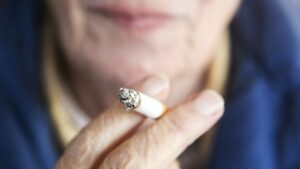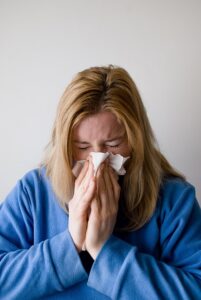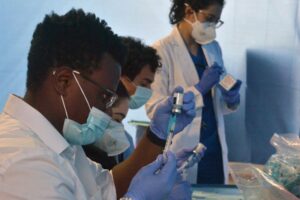More than 6.88 million people have died as a result of the severe acute respiratory syndrome coronavirus-2 (SARS-CoV-2) virus, which is the cause of the continuing coronavirus disease 2019 (COVID-19). The development of long-COVID, which has been defined as the continuation of COVID-19 symptoms for at least two months following diagnosis or one month following recovery from the acute illness requiring hospitalization, has been documented in numerous investigations. Prognostic and symptomatic Long-COVID are two separate types of the disease.
Thromboembolic problems are a severe type of long-COVID, whereas dyspnea and muscle exhaustion are symptoms of a milder form. Clinicians and researchers therefore concentrated on identifying the group most susceptible to developing long-COVID and discovered that those who experienced severe infection had a higher probability of acquiring persistent dyspnea.
Importantly, long-COVID-19 did not start before comorbidities such diabetes, cancer, obesity, and cardiovascular disease, which are connected to greater COVID-19 severity. The majority of COVID-19 patients report having ongoing weariness, dyspnea, joint pain, and chest pain after leaving the hospital, according to a recent Italian study. The most enduring and frequent long-COVID symptoms were fatigue, sleep disruption, dyspnea, and myalgia, according to a meta-analysis of 250,000 people.
According to the results of various research, weariness is the Long-COVID symptom that is most frequently mentioned. Thus, persons who were regularly monitored for physical performance, such as military personnel and professional athletes, were thought to be the best candidates for long-COVID-19 study. Treatments for long-COVID may be developed using the data from these groups.
A recent Diagnostics journal study determined the impact of physical activity on sleep, fatigue, and cognitive modifications in individuals affected by long-COVID. This study investigates how long-COVID differentially affects individuals with active lives from those with sedentary lifestyles.
A total of 506 participants were recruited, among which 138 were females. Many of the participants ski, which may be due to the proximity of the Dolomites mountain range. All participants had an active lifestyle and underwent an incremental stress test the year before contracting COVID-19 infection.
The participants were divided into four groups, namely, competitive cross-country ski athletes (AA), mountain amateurs (MA), ski instructors (SI), and sedentary people (SP). Participants belonging to the SP group were considered to be the control group. All participants experienced persistent muscle fatigue six months after the end of the COVID-19-positive period.










